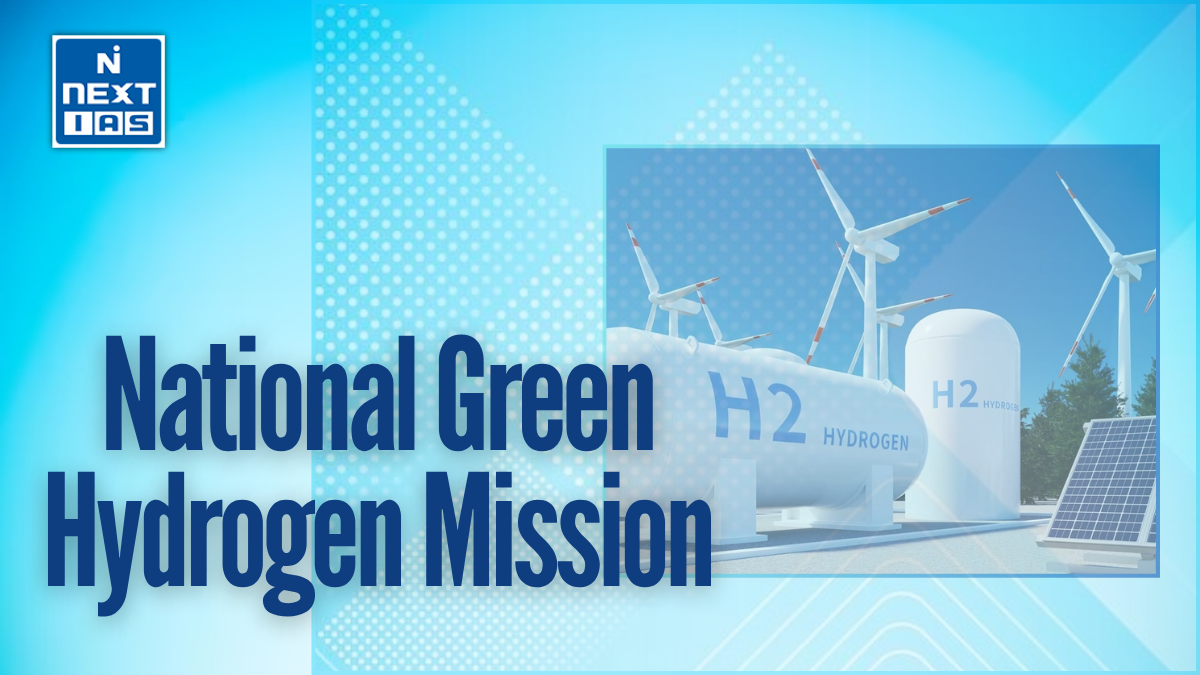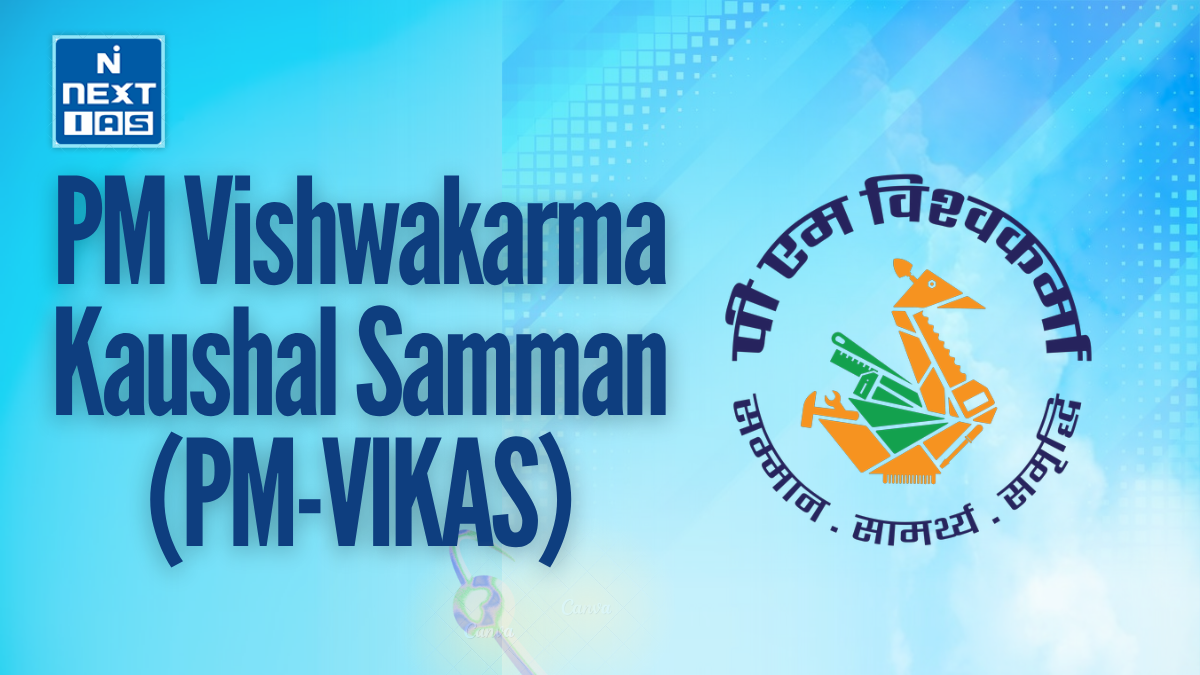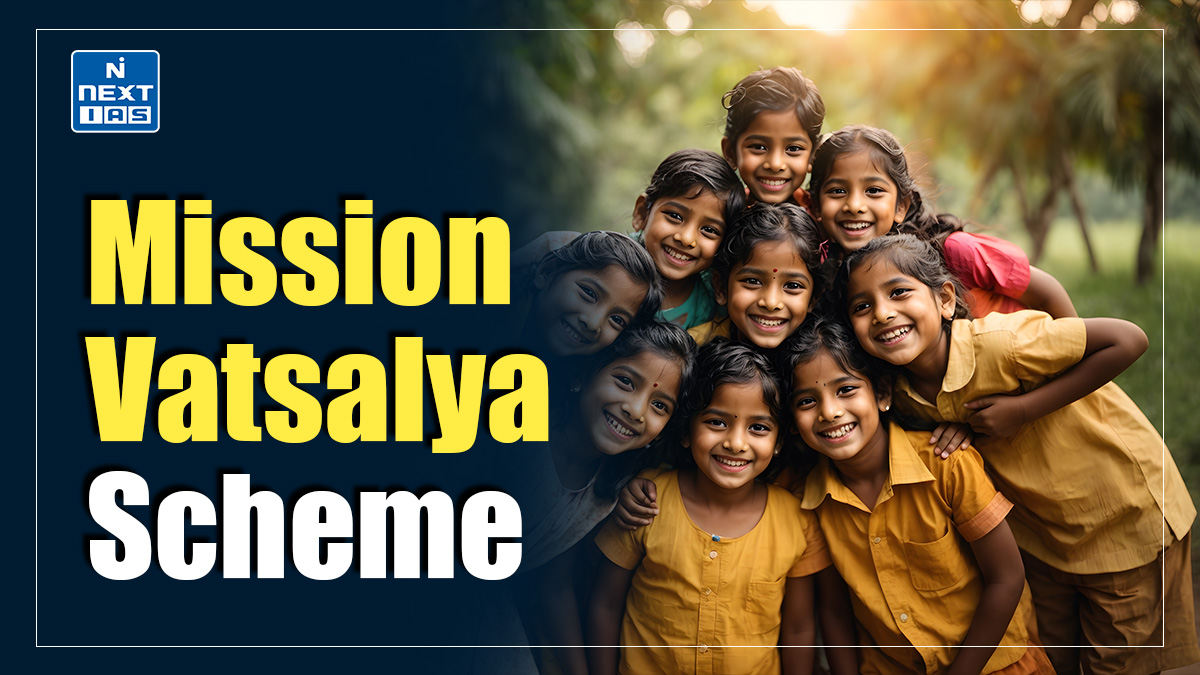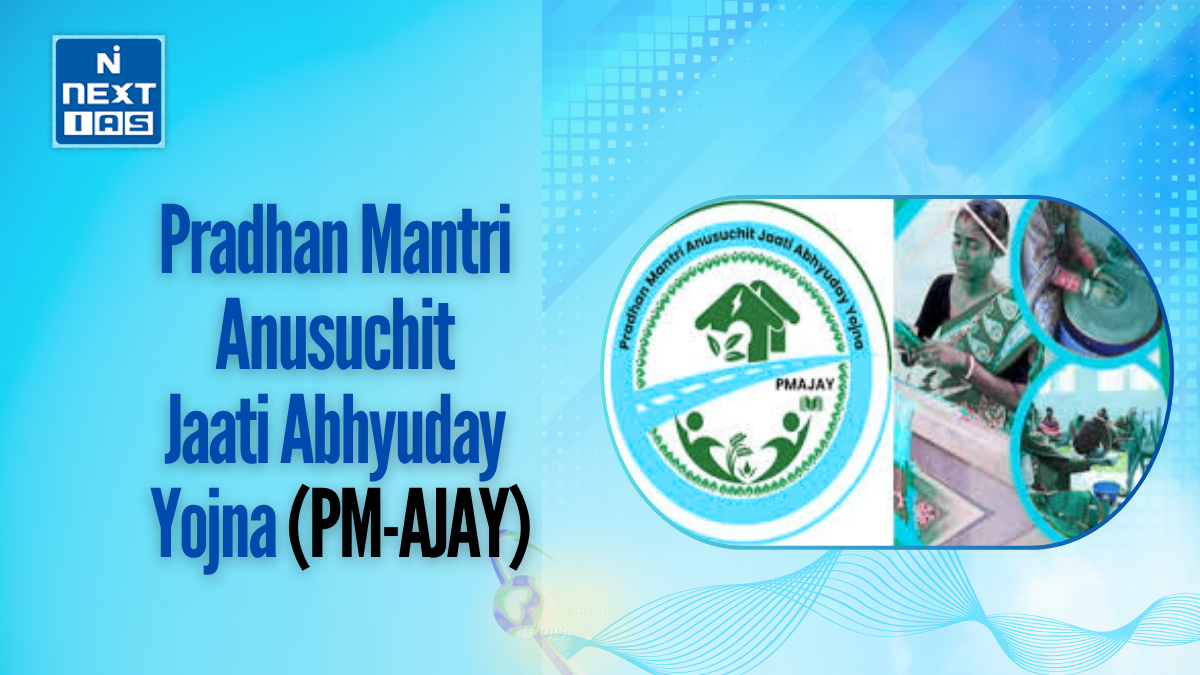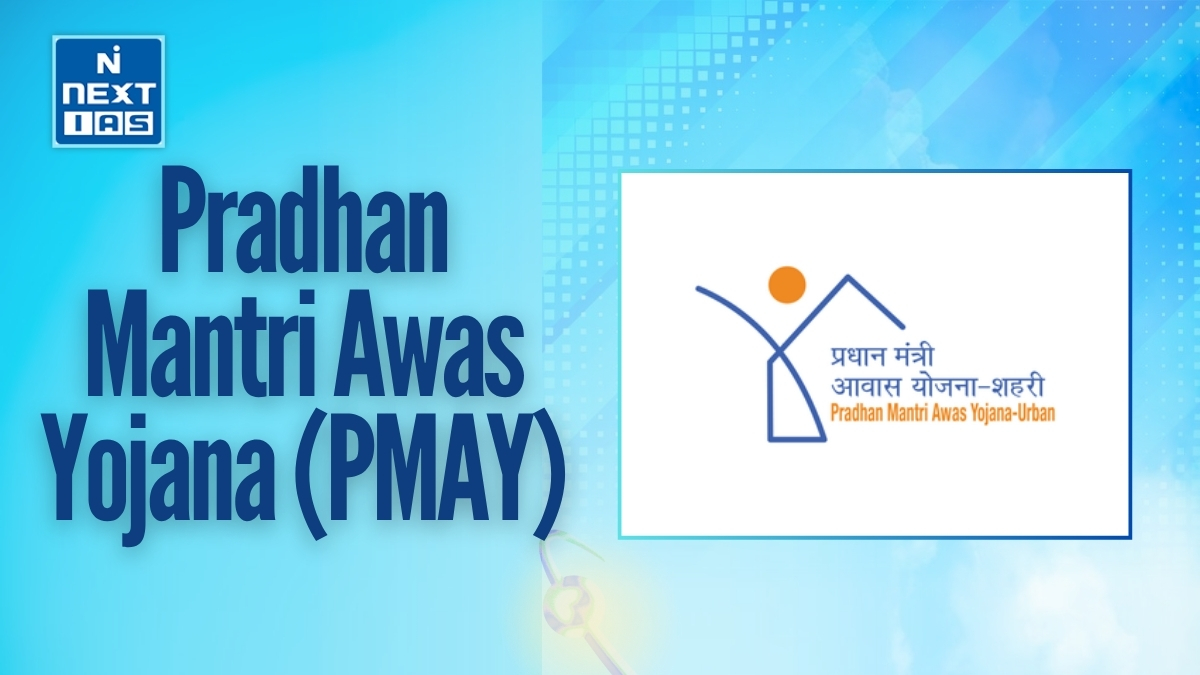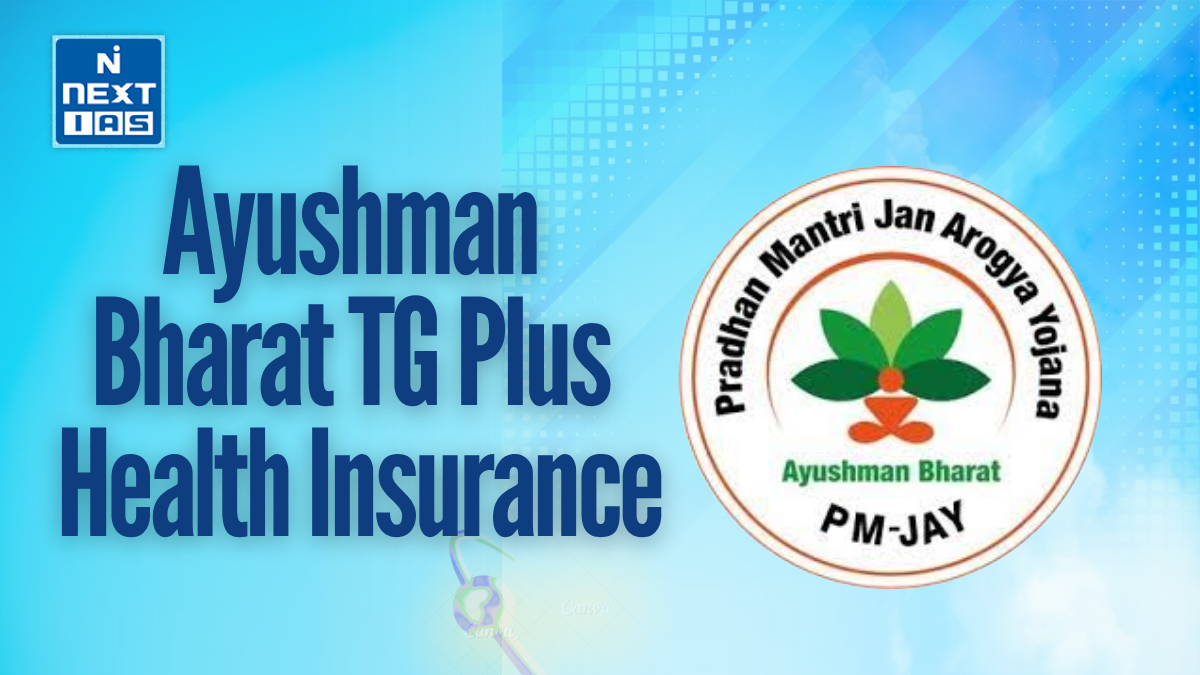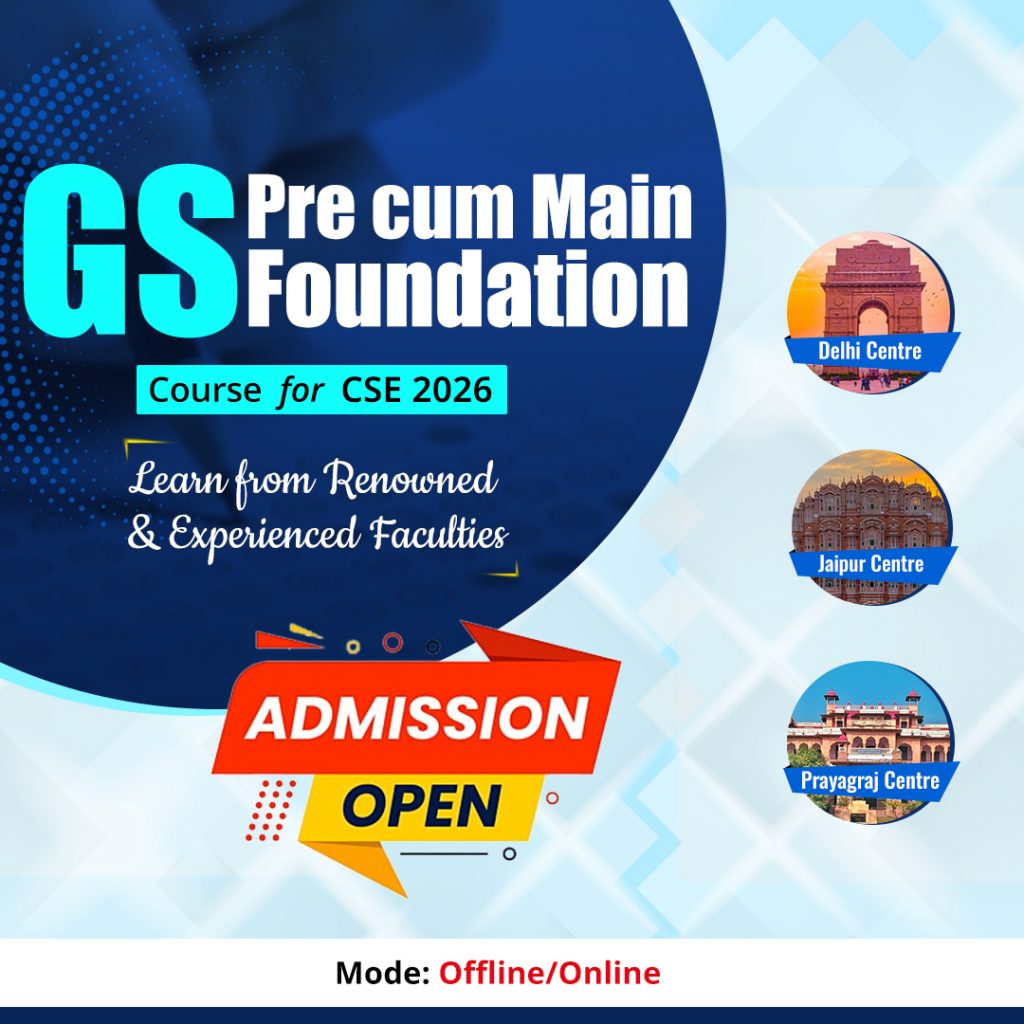
The Pradhan Mantri Gramin Awas Yojana (resolution dated July 31, 2015) seeks to provide affordable housing to rural households. It aims to provide 29.5 million houses to poor people living in rural areas under the scheme by 2024, promoting better living conditions. This scheme promotes rural infrastructure development by providing financial aid for the construction of houses.
About the Pradhan Mantri Gramin Awaas Yojana (PMAY-G)
- Incepted during 2015, Pradhan Mantri Gramin Awaas Yojana (PMAY-G) intends to provide affordable housing to rural poor, under the motto of “Housing for All by 2024”.
- The scheme targets homeless families or those living in inhuman conditions. PMAY-G hopes to achieve the construction of 2.95 crore houses by 2024 in rural areas.
- The financial assistance is ₹1.20 lakh per house under PMAY-G in plain areas and ₹1.30 lakh for hilly, difficult, and disaster-prone areas.
- The scheme supports and encourages sustainable and eco-friendly materials and technology in house construction. Beneficiaries are selected on the basis of Socio-Economic Caste Census (SECC) 2011 data by giving priority to the most vulnerable sections of society, including women, SCs, STs, and minorities.
- PMAY-G promotes the involvement of local self-governments and gram panchayats in the implementation procedure. The scheme is a critical step in improving rural living standards and the reduction of poverty.
Features of the Pradhan Mantri Gramin Awaas Yojana (PMAY-G)
- Affordable Housing: Financial assistance is given for constructing houses for poor rural families who do not have any proper shelter.
- Paramount Beneficiaries: The scheme targets homeless families and those living under shelter considered not fit for habitation, with priority for women, SCs, STs, and other marginalized communities.
- Financial Assistance: A grant of ₹1.20 lakh is given for construction on plain areas and ₹1.30 lakh for hilly, difficult, and disaster-prone areas.
- Technology and Sustainability: Support is given for the use of environment-friendly and cost-effective construction technologies so that houses are long-lasting and disaster-resistant.
- Selection Criteria: Beneficiaries are selected with reference to the Socio-Economic Caste Census (SECC) 2011, keeping utmost preference to target support to the most vulnerable.
- Time-Bound Implementation: Implementation and delivery of 2.95 crore houses is expected by the year 2024, towards the vision of Housing for All.
- Local Involvement: The active involvement of local governments and gram panchayats are required in scheme implementation and monitoring.
- Minimum Support for Construction: Financial assistance is provided to cover minimum construction-related expenses such as housing material, labour, and other allied requirements.
- Women’s Empowerment: Support is provided for arranging keeping women’s names in property ownership in order to enhance the financial security of women.
- Direct Benefit Transfer (DBT): The grant goes directly to the bank accounts of beneficiaries to ensure transparency and efficiency.
- Integration with Other Schemes: PMAY-G aligns with various government initiatives, like the Swachh Bharat Abhiyan, to improve sanitation and infrastructure.
Objectives of the Pradhan Mantri Gramin Awaas Yojana (PMAY-G)
- Housing Interventions for the Rural Poor and Homeless in Furtherance of the Vision of “Housing for All” by 2024.
- Improve Living Standards: Enhance the living conditions of rural families and provide them with well-constructed, safe, and sustainable homes.
- Reduce Rural Poverty: By giving financial assistance to the needy and vulnerable sections, enhance economic stability and security.
- Women Empowerment: Give preference to women for the ownership of the houses and ensure that the houses are registered in women’s names or jointly with men so as to empower women socially and economically.
- Sustainable Construction: Encourage the use of safe, affordable, and disaster-resistant materials and technologies for house construction.
- Facilitate Socio-Economic Development: Provide for better access to and availability of sanitation, drinking water, and electricity and also improve the general rural infrastructure and living standards.
- Address Regional Disparities: Provide additional assistance for house construction in hilly, disaster-prone, and far-flung areas as a measure for equitable development.
- Consider Rural Employment: Economic employment opportunities would be created in rural areas with house construction and local labor use.
- Ensure Transparency: Ensuring transparency and accountability in project implementation through the mechanism of Direct Benefit Transfer (DBT) and monitoring.
- Align with National Goals: Support India’s broader objectives of poverty alleviation, economic empowerment, and inclusive growth, contributing to the achievement of Sustainable Development Goals (SDGs).
Significance of the Pradhan Mantri Gramin Awaas Yojana (PMAY-G)
- Poverty Alleviation: PMAY-G is essential in alleviating rural poverty, offering financial assistance to low-income groups for the construction of homes, and thereby improving their socio-economic situation.
- Rural Development: The scheme aids in rural development by improving the infrastructure, thereby raising their living standards and giving them access to vital services such as water supply, sanitation, and electricity.
- Empowering Women: The scheme empowers women and promotes gender equality in rural areas by giving priority to the registration of houses in the names of women, thereby enhancing their financial independence and social security.
- Improved Health and Sanitation: Houses constructed under PMAY-G enable beneficiaries, in far majority cases, to avail themselves of basic sanitation, thereby ensuring improved health outcomes.
- Sustainable Housing: PMAY-G promotes the development of houses using green technology and disaster-resistant construction techniques, making sure that houses will be sustainable and able to resist natural calamities.
- Employment Generation: The scheme generates rural employment by engaging local labor in the construction of the houses, thus contributing to the local economy and reducing migration to urban areas.
- Reduction in Migration: With the provision of affordable housing in rural areas, PMAY-G helps in reducing the migration of rural families to urban centers in search of a better housing opportunity and better living conditions.
- Alignment with National Development Goals: PMAY-G contributes to the government’s broader goals of Housing for All, poverty reduction, rural empowerment, and inclusive growth, supporting the achievement of Sustainable Development Goals (SDGs).
Lacunae in the Pradhan Mantri Gramin Awaas Yojana (PMAY-G)
- Delayed Fund Disbursement: Sometimes the release of funds is delayed, thereby affecting the timely completion of construction of houses and causing the beneficiaries to get frustrated, with many houses remaining incomplete.
- Inadequate Beneficiary Selection: Certain families have been excluded from the scheme due to faulty identification processes based on the SECC 2011 data, and as a result, eligible households are left out.
- Construction Quality: Construction-wise, in many areas, the provided houses are of poor quality. Poorly constructed houses are not capable of withstanding harsh weather due to lack of proper monitoring and the use of substandard materials.
- Inadequate Infrastructure Support: Many beneficiaries are still deprived of basic infrastructure like drinking water, electricity, and proper sanitation facilities as more focus seems to be on the construction of houses without enough integration with other development schemes.
- Limited Employment Opportunities: The Scheme provides local employment for construction but does little to create any long-term sustainable rural employment for the trained workers once construction is complete.
- Regional Disparities: The scheme implementation has not been uniform across states, and consequently, certain regions are at a disadvantage with respect to funds, infrastructure, and awareness leading to disparities in coverage and progress.
- Gender Bias in Implementation: Despite prioritizing women’s ownership of homes, there are instances where houses are not registered in women’s names due to patriarchal attitudes or bureaucratic hurdles, undermining the scheme’s objective of women empowerment.
- Lack of Awareness: In remote rural areas, many eligible families remain unaware of the scheme or do not understand the application process, reducing the overall reach and effectiveness of PMAY-G.
- Beneficiary Contribution: While the scheme provides substantial financial assistance, some beneficiaries still find it difficult to contribute their share for house construction, leading to delays in the process.
- Monitoring and Evaluation Challenges: Inconsistent monitoring, lack of transparency in fund distribution, and poor evaluation systems have led to inefficiencies, corruption, and mismanagement in some states, affecting the scheme’s overall effectiveness.
Key Pointers of Pradhan Mantri Gramin Awaas Yojana (PMAY-G) for UPSC CSE Prelims
- Launch Year: 2015
- Objective: Provide affordable housing for rural poor families, aiming for “Housing for All” by 2024.
- Target Beneficiaries: Homeless families and those living in inadequate housing, with a focus on women, SCs, STs, and marginalized groups.
- Financial Assistance:
- ₹1.20 lakh per house in plain areas
- ₹1.30 lakh in hilly, remote, and disaster-prone areas.
- Total Houses Targeted: 2.95 crore houses by 2024.
- Beneficiary Selection: Based on Socio-Economic Caste Census (SECC) 2011 data.
- Construction Standards: Promotes eco-friendly and disaster-resistant housing technologies.
- Women’s Empowerment: Houses are encouraged to be registered in women’s names, enhancing women’s financial security.
- Direct Benefit Transfer (DBT): Funds are transferred directly to the bank accounts of beneficiaries, ensuring transparency.
- Linkages with Other Schemes: Integrated with Swachh Bharat Abhiyan, clean drinking water, sanitation, and electricity schemes.
- Rural Employment: Generates local employment during house construction, contributing to rural economy.
- Monitoring: Regular monitoring through Gram Panchayats and local authorities to ensure effective implementation and transparency.
- Challenges: Includes issues such as delayed fund disbursement, poor construction quality, and regional disparities in implementation.
Way Forward
The way forward for PMAY-G involves improving fund disbursement, enhancing monitoring mechanisms, and ensuring better quality construction. Strengthening infrastructure linkages, increasing awareness among beneficiaries, and addressing regional disparities can further enhance the scheme’s effectiveness. Additionally, integrating sustainable construction practices and improving post-construction support will ensure long-term success.
Conclusion
The Pradhan Mantri Gramin Awaas Yojana (PMAY-G) is a significant step towards achieving “Housing for All” by 2024. While it has improved rural living standards, challenges like delayed fund disbursement, quality issues, and regional disparities need addressing to ensure its long-term success and inclusivity.
